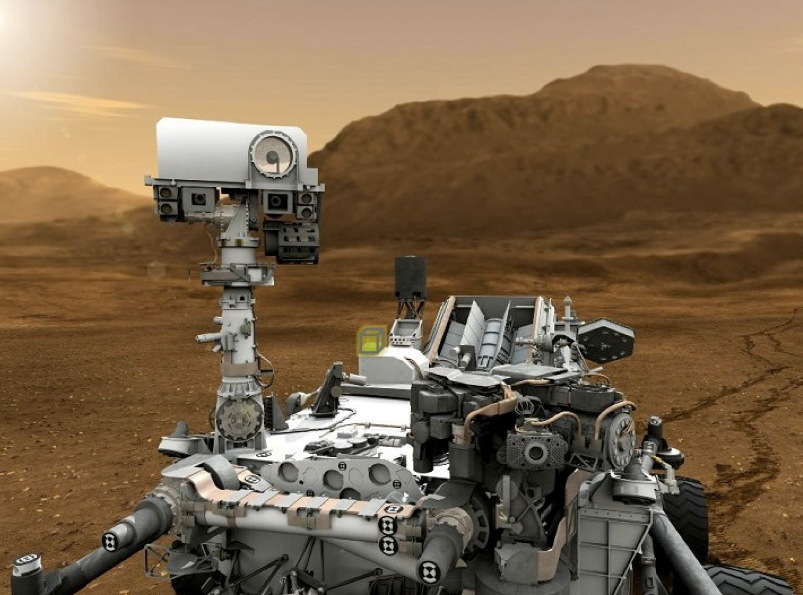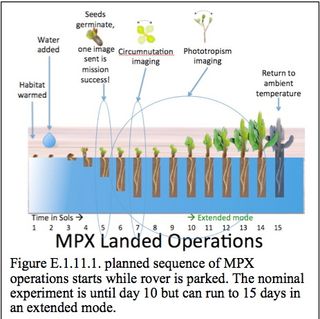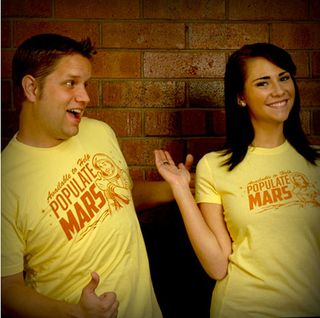
Plant life may touch down on Mars in 2021.
Researchers have proposed putting a plant-growth experiment on NASA's next Mars rover, which is scheduled to launch in mid-2020 and land on the Red Planet in early 2021. The investigation, known as the Mars Plant Experiment (MPX), could help lay the foundation for the colonization of Mars, its designers say.
"In order to do a long-term, sustainable base on Mars, you would want to be able to establish that plants can at least grow on Mars," MPX deputy principal investigator Heather Smith, of NASA's Ames Research Center in Mountain View, California, said April 24 at the Humans 2 Mars conference in Washington, D.C. "This would be the first step in that … we just send the seeds there and watch them grow." [The Boldest Mars Missions in History]
The MPX team — led by fellow Ames scientist Chris McKay — isn't suggesting that the 2020 Mars rover should play gardener, digging a hole with its robotic arm and planting seeds in the Red Planet's dirt. Rather, the experiment would be entirely self-contained, eliminating the chance that Earth life could escape and perhaps get a foothold on Mars.

MPX would employ a clear "CubeSat" box — the case for a cheap and tiny satellite — which would be affixed to the exterior of the 2020 rover. This box would hold Earth air and about 200 seeds of Arabidopsis, a small flowering plant that's commonly used in scientific research.

The seeds would receive water when the rover touched down on Mars, and would then be allowed to grow for two weeks or so.
"In 15 days, we'll have a little greenhouse on Mars," Smith said.
Get the Space.com Newsletter
Breaking space news, the latest updates on rocket launches, skywatching events and more!
MPX would provide an organism-level test of the Mars environment, showing how Earth life deals with the Red Planet's relatively high radiation levels and low gravity, which is about 40 percent as strong as that of Earth, she added.
"We would go from this simple experiment to the greenhouses on Mars for a sustainable base," Smith said. "That would be the goal."
In addition to its potential scientific returns, MPX would provide humanity with a landmark moment, she added.
"It also would be the first multicellular organism to grow, live and die on another planet," Smith said.
The 2020 Mars rover is based heavily on NASA's Curiosity rover, which landed in August 2012 to determine if the Red Planet has ever been capable of supporting microbial life. Curiosity has already answered that question in the affirmative, finding that a site called Yellowknife Bay was, indeed, habitable billions of years ago.

NASA received 58 instrument proposals for the rover during its call for submissions, which lasted from September 2013 until January of this year. Final selections should be made by June or so, NASA officials have said.
Curiosity totes 10 instruments around Mars, so the 2020 rover may end up with a similar amount of scientific gear.
Follow Mike Wall on Twitter @michaeldwall and Google+. Follow us @Spacedotcom, Facebook or Google+. Originally published on Space.com.
Join our Space Forums to keep talking space on the latest missions, night sky and more! And if you have a news tip, correction or comment, let us know at: community@space.com.

Michael Wall is a Senior Space Writer with Space.com and joined the team in 2010. He primarily covers exoplanets, spaceflight and military space, but has been known to dabble in the space art beat. His book about the search for alien life, "Out There," was published on Nov. 13, 2018. Before becoming a science writer, Michael worked as a herpetologist and wildlife biologist. He has a Ph.D. in evolutionary biology from the University of Sydney, Australia, a bachelor's degree from the University of Arizona, and a graduate certificate in science writing from the University of California, Santa Cruz. To find out what his latest project is, you can follow Michael on Twitter.